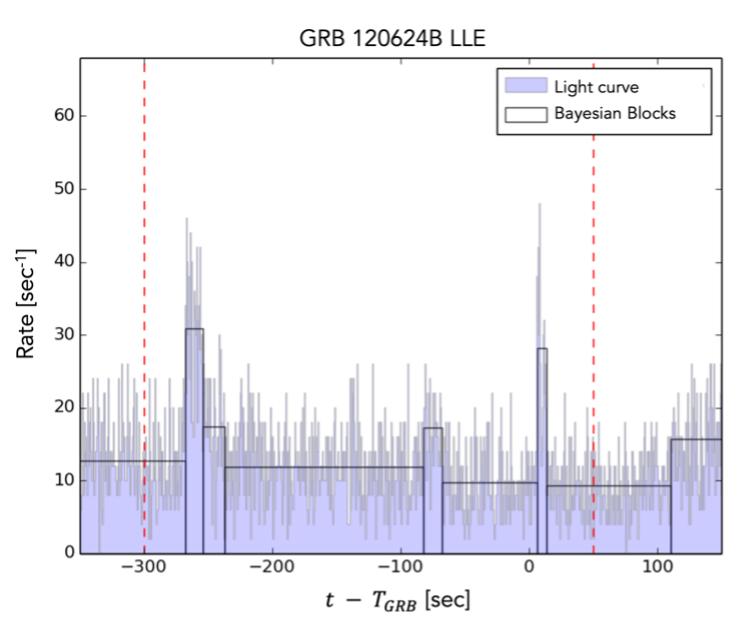
The Dark Matters at ICRC 2025
Milena Crnogorčević
This paper presents a comprehensive rapporteur summary of the dark matter research presented at the 39th International Cosmic Ray Conference (ICRC 2025). The dark matter track at ICRC 2025 reflected a field in transition. Direct detection has reached the neutrino floor; indirect searches are becoming fully multimessenger; non-WIMP candidates are becoming central; and traditionally separate communities are converging. Progress now hinges as much on coherent data and analysis methods as on new detectors.

Gamma-Ray Observations of Galaxy Clusters Strongly Constrain Dark Matter Annihilation in Prompt Cusps
Milena Crnogorčević, M. Sten Delos, Nadia Kuritzén, Tim Linden
Thermal dark matter models predict the formation of dense "prompt cusps" in the early Universe. These compact structures can dominate the annihilation signal of dark matter. In this study, we model the γ-ray flux expected from such cusps residing in seven nearby galaxy clusters and analyze 15 years of Fermi-LAT data for corresponding signals. We find no significant excess and set the most stringent constraints to date on the dark matter annihilation cross-section for masses below ~200 GeV. These results exclude large portions of the thermal WIMP parameter space and challenge dark matter interpretations of the Galactic Center Excess.

Strong Constraints on Dark Matter Annihilation in Ursa Major III
Milena Crnogorčević, Tim Linden
Recently, astronomers discovered a new, very faint dwarf galaxy, Ursa Major III, estimated to contain a peculiarly large amount of dark matter. Using 15 years of data from the Fermi-LAT, we searched for gamma rays from this galaxy which could indicate dark matter presence. No such gamma-ray emission was found, hence our study set limits on WIMP dark matter properties. Ursa Major III, along with other future extreme systems that will be detected in abundance with new optical and spectroscopical surveys, present an outstanding opportunity to test the thermal dark matter annihilation hypothesis.

ALPs and GRBs with the LAT Low Energy (LLE) technique
Milena Crnogorčević, Regina Caputo, Manuel Meyer, Nicola Omodei, Michael Gustafsson
We investigate the sensitivity of the Fermi-LAT Low Energy (LLE) technique to detecting axion-like particles (ALPs) produced in core-collapse supernova (CCSN) explosions. We perform a data-driven sensitivity analysis to determine CCSN distances for which a detection of an ALP signal is possible with the LLE technique which, in contrast to the standard LAT analysis, allows for a a larger effective area for energies down to 30 MeV. Assuming the CCSN → gamma-ray burst (GRB) relation, we consider ALP emission from LLE-detected GRBs. We report no statistically significant detection, but provide limits and outlook for future instruments.

Searching for ALPs in precursor emission of long GRBs
Milena Crnogorčević, Regina Caputo, Manuel Meyer, Nicola Omodei
(Work in progress) The ALP emission precedes that of the jet outbreak after a collapse of a massive star. With the observationally suggested causal connection between CCSNe and long gamma-ray bursts (lGRBs), a spectral analysis of the Fermi-observed lGRBs with precursor emission provides an unexplored venue in the context of ALP searches. Several theoretical models have been proposed to address the astrophysical origin of the precursor emission; however, currently no single model can explain its astrophysical origin. Here, we hypothesize that this precursor phenomenon could be accounted for by the ALP-induced burst that is released before the main gamma-ray jet emission. A comprehensive analysis of lGRB precursors to inform whether their origin can be explained with ALPs is currently underway, and we plan to publish the results in the early 2024. Stay tuned!

Snowmass 2021: Light Dark Matter Candidates with MeV gamma-ray signatures
Regina Caputo, Chanda Prescod-Weinstein, Carolyn Kierans, Milena Crnogorčević, et al.
Weakly interacting sub-eV particles (WISPs), potential dark matter candidates, are hypothesized to produce distinct gamma-ray signatures. Despite a decade of data collection by the Fermi-LAT witin the relevant energy range, no conclusive detections of WISPs have been made. Challenges at lower energies, especially Fermi-LAT's angular resolution, hinder effective identification of sources for WISP models. Enhanced energy resolution and polarization measurements, particularly in the MeV range, are crucial for targeted searches involving supernovae and blazars. We discuss the importance of building a new telescope optimized for MeV observations to explore untapped areas of dark matter parameter space and understand its particle nature.